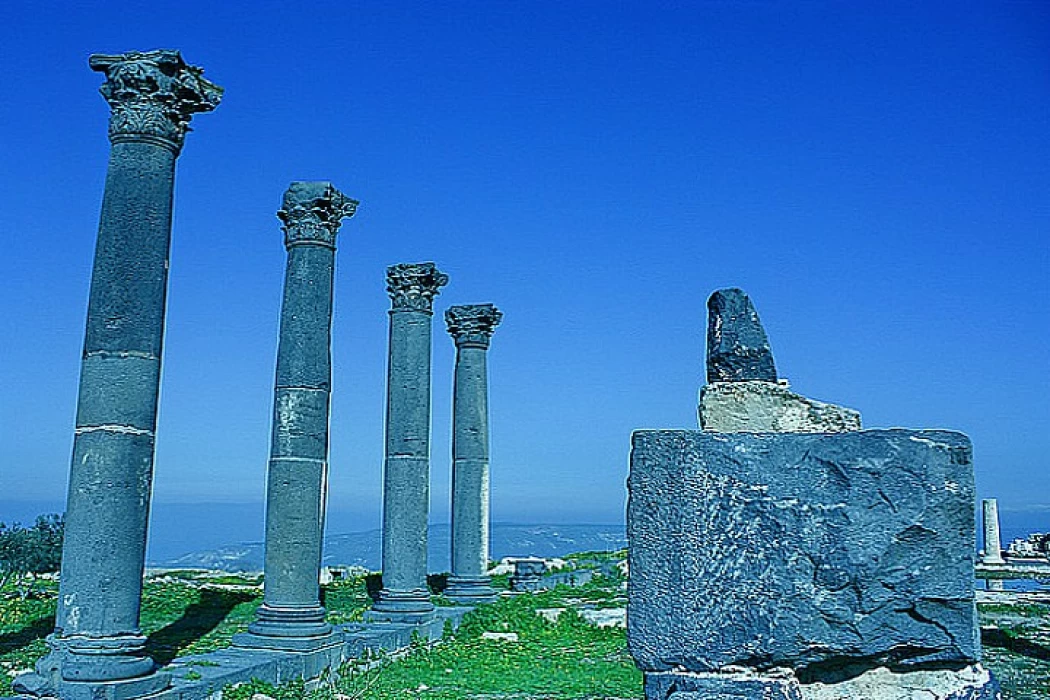
Top Attractions of Umm Qais
Top Attractions of Umm Qais
The ancient city of Umm Qais, located in the north of Irbid, Hashemite Kingdom of Jordan, is a beautiful archaeological city that emphasizes the grandeur of the past with its columns and stones overlooking the Yarmouk River, Lake Tiberias and the Golan Heights, and these ruins date back to the Roman era about 2400 years ago.
It was one of the ten cities of the Roman Empire (the Decapolis) and was then called Jeddah, and several civilizations passed through this picturesque city. In the modern era, this ancient city played an important role in the 1967 war, as when we visit it, The Jordanian army's trenches as they were more than forty years ago are visible.
In 218 BC, Ptolemy IV (221-203 BC), king of Egypt, ruled Palestine and Jordan. Antiochus III Seleucus (223-186 BC) attacked him with a military campaign and took control of Galilee, crossed the Jordan River and captured parts of northern Jordan, and Judea surrendered to him, which is how Greek civilization reached it.
In 63 BC, the Roman commander Pompey conquered it from the Greek Greeks and included it in the Decapolis Pact, which was established during the Greek and Roman times, and included ten cities in the area at the junction of the borders of Jordan, Syria and Palestine, including: Jerash Amila or Fahl layer in the Jordan Valley, and the city of Umm al-Jamal in northeastern Jordan.
It attracted writers, artists, philosophers and poets of the Greek era such as:
- The satirist Minibus
- The satirist Milagros
- The eloquent orator Theodorus, who lived between 14-37 AD.
Umm Qais is characterized by its monuments that have been preserved to this day in their original form. The city has many monuments:
- Southern Theater (Umm Qais)
- Byzantine Church (Umm Qais)
- Eastern Amphitheater (Umm Qais)
- Markets and warehouses
- Roman Baths Complex (Umm Qais)
- Basilica Church
- Arched shops (Umm Qais)
- Nymphaeum
- The Umm Qais Museum belongs to one of its sons, who is from the Rusan clan.














